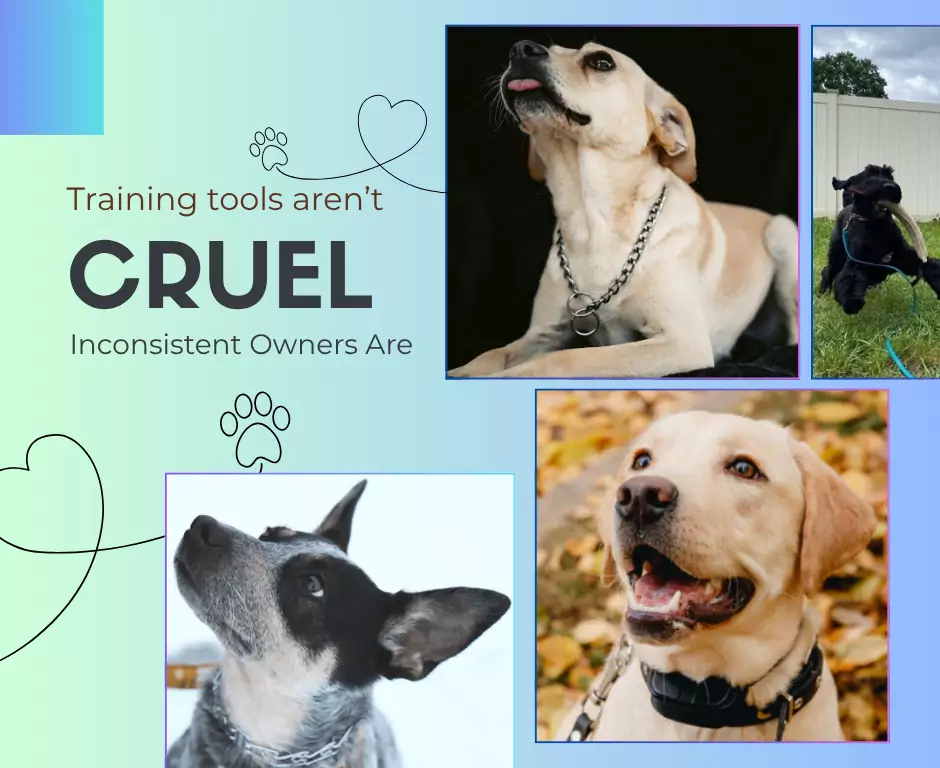Training Tools Aren’t Cruel, Inconsistent Owners Are
July 6, 2025

Here’s what I know after years of hands-on experience with all kinds of dogs, from pushy, powerful working breeds to under-socialized rescues and everything in between:
Tools aren’t the problem. Inconsistent humans are.
The truth about training tools
A leash is a tool. So is a crate. So is a treat pouch.
Tools aren’t magical. They don’t train the dog for you. But they do make communication clearer and more effective when you know how to use them properly.
A prong collar used by someone with timing, fairness, and understanding? That’s a game-changer for a large, powerful dog who has no idea how big they are.
An e-collar used to reinforce recall? That gives off-leash freedom to a dog who would otherwise never be trusted to run in an open field.
A slip lead used to teach leash pressure and impulse control? That can make walks safer for both the dog and the owner.
But these same tools, used without education or fairness, can absolutely create confusion or even fear and mistrust. That’s not a tool issue. That’s a handler issue.
Tools don’t cause trauma, lack of clarity does
One of the biggest problems I see with dog training isn’t “tool misuse”, it’s inconsistency.
Dogs who get yelled at one day for jumping on the couch, and then snuggled up there the next.
Dogs who hear “no” but never get a follow-through.
Dogs who pull on leash for months without correction, and then get jerked around in frustration.
That’s where the damage happens.
Not because the tool is inherently bad—but because the human never took the time to train fairly and consistently.